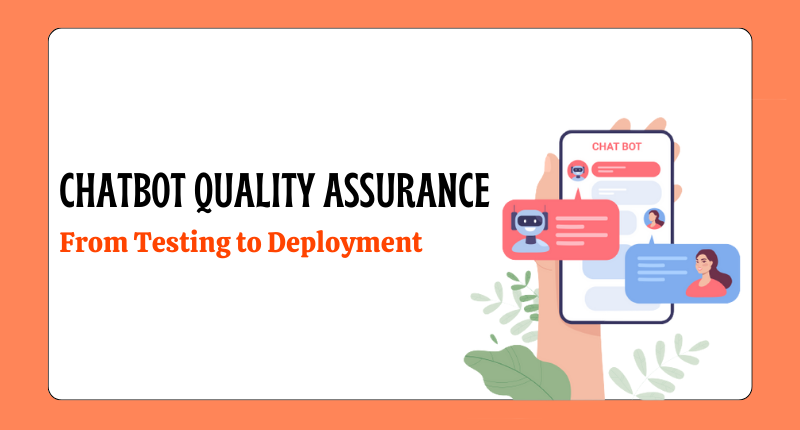Chatbots have become indispensable tools for businesses looking to enhance customer service, streamline operations, and engage with their audience effectively. However, a chatbot is only as good as its performance and reliability. To ensure a seamless user experience, chatbot quality assurance is paramount. In this blog post, we’ll explore the journey of a chatbot from development and testing to deployment, with a focus on maintaining the highest standards of quality.
Chatbot Quality Assurance: From Testing to Deployment

Understanding the Importance of Chatbot Quality Assurance
1. Reliability Matters
Before a chatbot goes live, it must undergo rigorous quality assurance testing to ensure it can handle user queries effectively. Reliability is crucial because users expect immediate responses and accurate information. Any glitches or misinterpretations can lead to a poor user experience and erode trust in the chatbot.
2. User Experience is Key
A chatbot’s primary goal is to enhance the user experience. A poorly designed or malfunctioning chatbot can frustrate users and drive them away. Quality assurance ensures that the chatbot is user-friendly, responsive, and capable of providing meaningful interactions.
The Chatbot Quality Assurance Process
1. Development Phase
Quality assurance begins during the development phase. Here are some key considerations:
Design and Flow: Ensure that the chatbot’s conversational flow is intuitive and aligns with user expectations.
Data Accuracy: Verify that the chatbot has access to accurate and up-to-date information.
Security: Address potential security vulnerabilities to protect user data.
2. Functional Testing
Functional testing involves evaluating the chatbot’s functionality. Testers simulate user interactions and assess whether the chatbot responds correctly to a range of inputs. This phase also includes:
Regression Testing: Ensure that new updates or changes do not break existing functionality.
Usability Testing: Collect feedback from real users to identify usability issues.
3. Performance Testing
Performance testing assesses the chatbot’s ability to handle various loads and maintain responsiveness. Key areas to test include:
Load Testing: Determine how the chatbot performs under heavy user traffic.
Response Time: Ensure that the chatbot responds quickly to user queries.
4. Natural Language Understanding (NLU) Testing
NLU testing evaluates the chatbot’s ability to understand and interpret natural language inputs accurately. It involves:
Intent Recognition: Verify that the chatbot can recognize user intents accurately.
Entity Recognition: Ensure that the chatbot can extract relevant information from user inputs.
5. Integration Testing
If the chatbot is integrated with other systems or platforms, integration testing is crucial. Ensure seamless communication and data exchange between the chatbot and external systems.
Deployment and Post-Deployment Monitoring
1. Staging Environment
Before deploying the chatbot to production, it’s advisable to have a staging environment where final tests are conducted to ensure everything is working correctly.
2. Continuous Monitoring
Once the chatbot is live, continuous monitoring is essential. This involves:
Performance Metrics: Track response times, error rates, and user satisfaction.
User Feedback: Gather and analyze user feedback to identify areas for improvement.
Security Audits: Regularly assess the chatbot’s security measures to protect user data.
Conclusion
Chatbot quality assurance is an ongoing process that extends from the development phase to deployment and beyond. Ensuring the reliability, performance, and user-friendliness of a chatbot is vital for its success. By following a comprehensive quality assurance process, businesses can deliver chatbots that provide exceptional user experiences and drive meaningful interactions with their audience.



